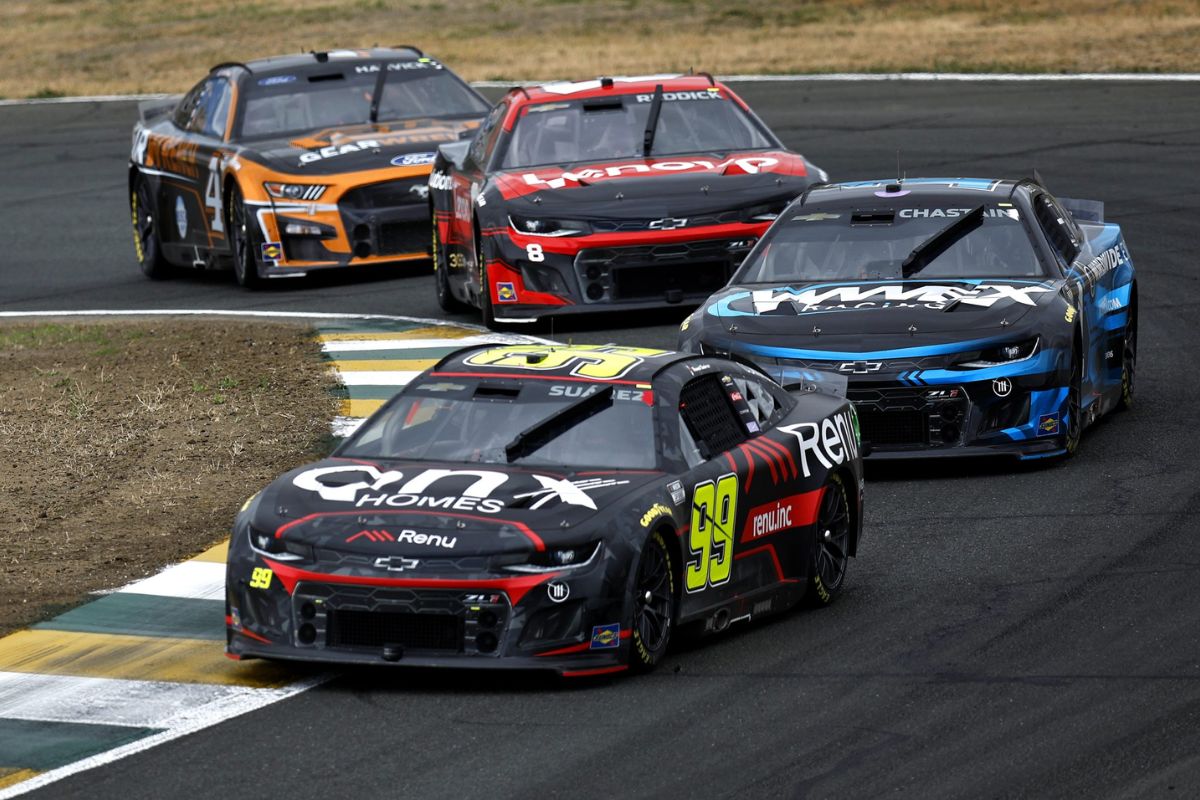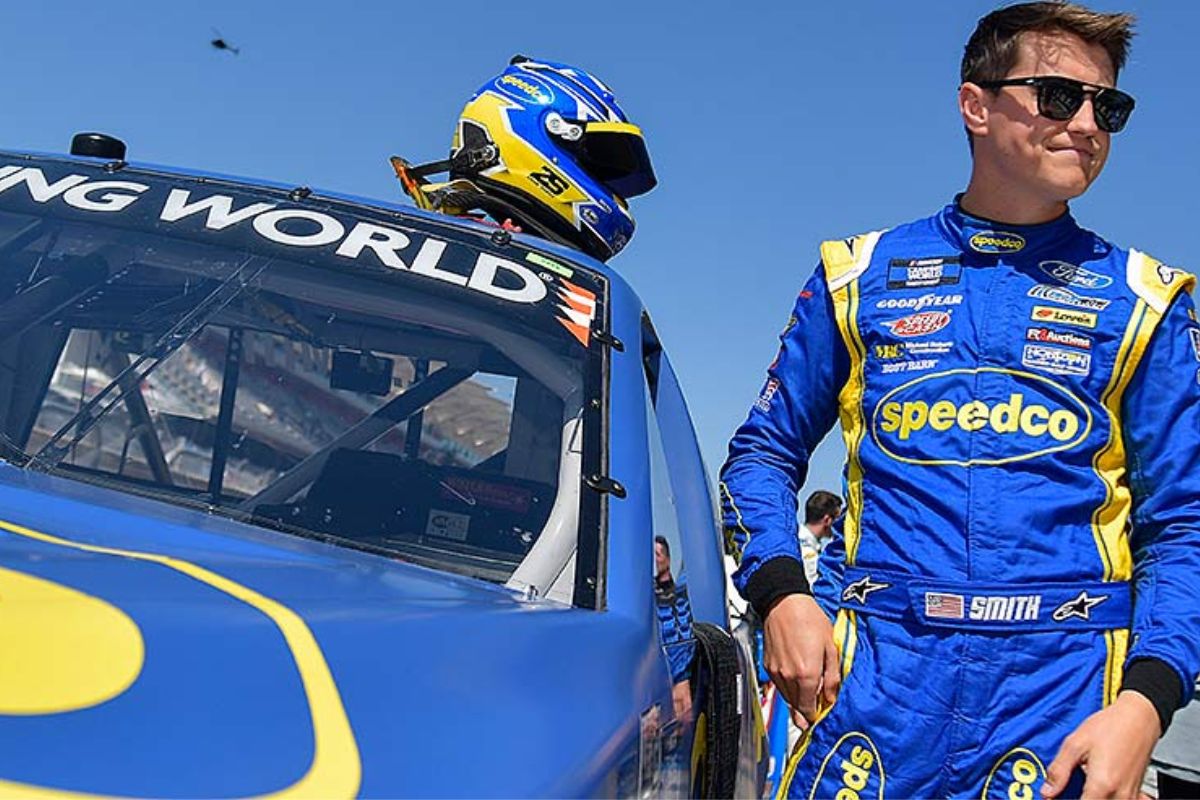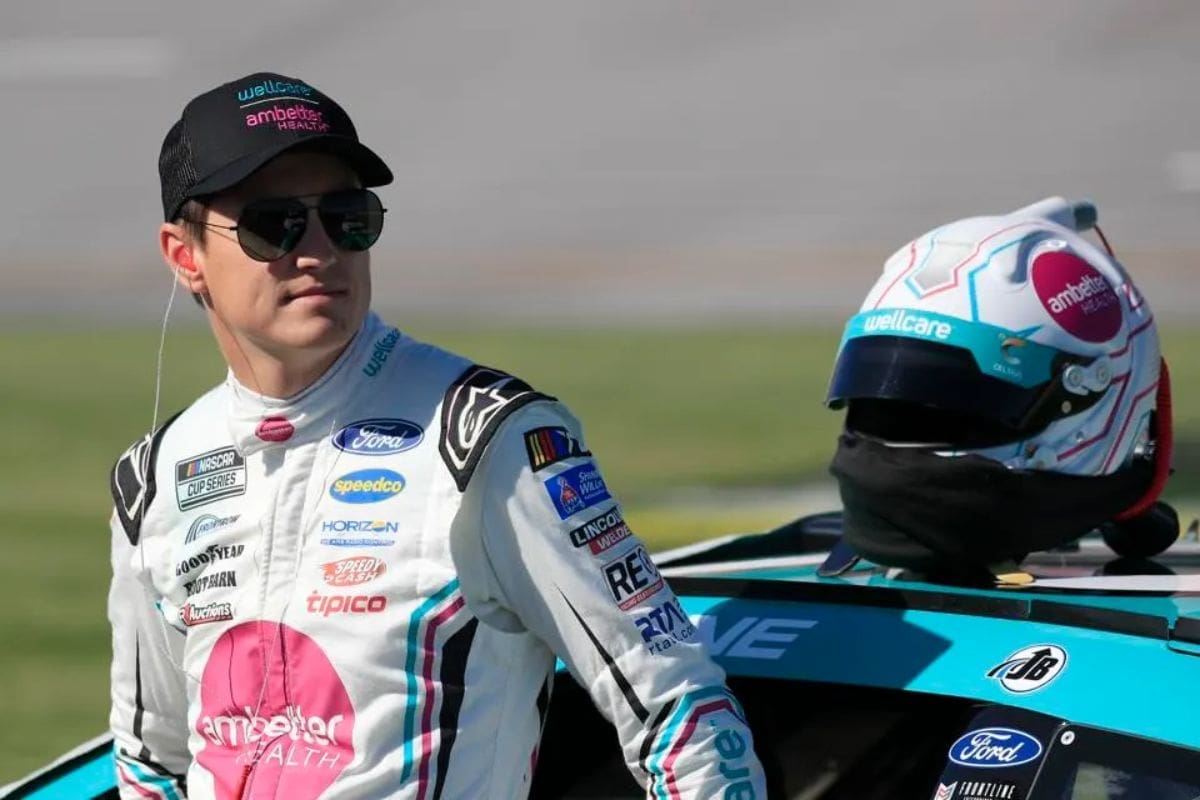Trackhouse’s Multi-Million Dollar Expansion: Trackhouse Racing‘s multi-million dollar expansion marks a noteworthy crossroads in NASCAR, particularly for Shane van Gisbergen‘s legacy. This tactical investment aims to improve competitive performance and reflects a broader trend of revitalizing interest in the sport. As SVG contemplates his future, the implications of this expansion could extend beyond team dynamics, potentially influencing the recruitment of diverse talents and groundbreaking approaches. With the evolving landscape of NASCAR, one must consider how these developments might reshape the narrative surrounding emerging drivers and their opportunities in the series.
Key Highlights
- Trackhouse Racing’s multi-million dollar expansion aims to enhance competitiveness, potentially benefiting drivers like SVG and increasing overall team performance.
- Shane van Gisbergen’s (SVG) successful debut in NASCAR created a legacy, bridging international motorsport with the NASCAR community.
- SVG’s potential return to NASCAR could reshape Trackhouse’s strategies, attracting new sponsors and enhancing the team’s marketability.
- The expansion reflects Trackhouse’s confidence in future results, which may lead to further opportunities for emerging talents like Zane Smith.
- Project 91’s focus on diversity and innovation aligns with Trackhouse’s growth, fostering an environment that could reignite SVG’s NASCAR legacy.
Trackhouse Racing’s Unique Approach with Project 91
Trackhouse Racing’s creative approach with Project 91 has fundamentally reshaped the landscape of NASCAR by integrating diverse racing talents from around the globe. Spearheaded by Justin Marks, this initiative has become a cornerstone of the team’s plan, allowing it to transcend traditional boundaries within the sport. The program, launched in 2022, aims to attract exceptional drivers from multiple disciplines, emphasizing international talent and expanding NASCAR’s appeal beyond its conventional American roots.
A prime example of Project 91’s success is the recent graduation of Shane van Gisbergen to the Cup Series. His seamless change not only highlights the effectiveness of the program but also reinforces Trackhouse’s commitment to fostering a culture of inclusivity and creativity in racing.
By recruiting drivers who have honed their skills in different environments, Trackhouse Racing has successfully introduced fresh perspectives and techniques to the NASCAR circuit, enhancing the competitive edge of the team.
Moreover, Project 91 serves as a tactical response to the growing demand for diversity within motorsports. By facilitating the entry of non-traditional drivers, Trackhouse Racing paves the way for a more dynamic and varied competitive landscape.
As Justin Marks has indicated, the project is far from complete. The anticipation surrounding its next phase signals that Trackhouse Racing is poised to continue its creative expedition, further redefining what it means to compete at the highest levels of NASCAR.
Future of Project 91
The success of Project 91 has set a high bar for innovation within NASCAR, prompting discussions about its future path. As Trackhouse Racing navigates the complexities of expanding its competitive presence with a tertiary team, the future of Project 91 remains a focal point. Team owner Justin Marks has expressed a strong desire to continue the initiative, emphasizing its potential to attract both drivers and commercial partners.
“We’re having those discussions right now. I think that Project 91 is something that 100 percent in my mind, I’d love to continue.” – Marks
Although SVG’s remarkable ascent and subsequent shift to a full-time Cup Series role in 2025 have generated excitement, they also complicate the dynamics of Project 91. The departure of Zane Smith and the signing of Connor Zilisch to JR Motorsports reflect the ever-shifting landscape of driver availability and team obligations.
Despite these challenges, Marks remains optimistic, indicating that Project 91 will return “sooner than later,” provided it aligns with the operational capabilities of Trackhouse Racing.
“I would expect Project 91 to be back sooner than later. Obviously, it has to fit into the workflow of the company. We’re expanding our focus on running three competitive Cup cars next year. There’s a lot of interest in Project 91, both from drivers and from commercial partners. I would anticipate that to continue in some capacity.” – Marks
The evolving scenario presents a dual opportunity: it allows Trackhouse to solidify its identity as a progressive team while also fostering a platform for diverse talents to demonstrate their skills. As interest in Project 91 continues to grow, the focus will likely be on how to integrate this initiative seamlessly within the framework of three competitive Cup cars.
Impact on Zane Smith
Zane Smith’s expedition in NASCAR has taken an unexpected turn, showcasing both the challenges and uncertainties faced by young talents in a rapidly evolving landscape. Initially celebrated as a promising enhancement to Trackhouse Racing, Smith’s quest quickly encountered turbulence when the team opted to field only two full-time drivers for the 2024 season. This decision left him without a primary seat, forcing him to join Spire Motorsports—a move that proved to be fraught with difficulty.
Transitioning from a familiar environment to a new team, Smith struggled to assert his presence on the track. The lack of support and resources typically associated with an established program hampered his ability to demonstrate the skills that earned him accolades as a former Truck Series champion. This setback glaringly highlighted the precarious nature of a driver’s career, particularly for those just beginning to carve out their niche in the Cup Series.
Further complicating matters, Spire Motorsports chose to sever ties with the young driver following the season. The competitive landscape of NASCAR is unforgiving, and as the silly season unfolds, the urgency for Smith to secure a new opportunity intensifies.
While teams like Front Row Motorsports and 23XI Racing eye expansion, Smith must navigate this unpredictable terrain to find a suitable landing spot. His experience emphasizes a critical lesson in NASCAR: talent alone may not guarantee success; the right environment and timing are similarly paramount in shaping a driver’s future.
Potential New Homes for Zane Smith
Steering through the competitive waters of NASCAR, Zane Smith finds himself at a pivotal crossroads as he seeks potential new homes after his departure from Spire Motorsports. With the shifting dynamics of team line-ups and charter availability, Smith’s next move could greatly shape his career path.
Front Row Motorsports (FRM) presents a compelling opportunity. Having secured their third charter and added Noah Gragson to their roster, the inclusion of Smith in the third car would create a formidable trio, especially with Todd Gilliland stepping into the senior driver role. This arrangement not only strengthens FRM’s competitive edge but also improves Smith’s prospects for consistent performance.
Alternatively, 23XI Racing looms as another viable option, contingent upon Denny Hamlin and Michael Jordan’s willingness to invest $25–30 million for a third charter. Such an investment could catalyze Smith’s change into a more competitive environment, further elevating his profile within the sport.
Discussion on Trackhouse Racing’s Handling of Zane Smith
Guiding the complexities of driver management in NASCAR, Trackhouse Racing’s approach to Zane Smith has drawn considerable scrutiny. The organization’s strategy in navigating the contractual and competitive landscape surrounding Smith has raised questions about its long-term vision and commitment to talent development.
As the sport evolves, balancing driver aspirations with organizational goals becomes increasingly intricate.
Key aspects of Trackhouse’s handling of Smith include:
- Contractual Decisions: The choice to engage with Smith while balancing existing contracts has sparked debates about prioritization and loyalty within the team.
- Development Opportunities: Fans and analysts similarly question whether Trackhouse provided the necessary developmental support for Smith to flourish as a driver.
- Market Positioning: The implications of Smith’s potential departure on Trackhouse’s market positioning and brand identity cannot be understated, as securing top talent is essential for competitive success.
Ultimately, Trackhouse Racing’s management of Zane Smith highlights the broader challenges faced by NASCAR teams in a rapidly changing environment.
The ability to cultivate and retain emerging talent will greatly influence the team’s path. Insight into Trackhouse’s decision-making process could offer valuable lessons for other organizations aiming to balance ambition with practicality.
News in Brief: Trackhouse’s Multi-Million Dollar Expansion
Trackhouse Racing’s tactical expansion represents a considerable opportunity to reshape the NASCAR landscape, particularly through the lens of Shane van Gisbergen’s legacy. By harnessing advanced technology and creative approaches, the organization positions itself to attract diverse talent and improve competitive dynamics. This investment not only benefits established drivers but also paves the way for emerging talents like Zane Smith. The evolving narrative surrounding Trackhouse Racing highlights the potential for groundbreaking impacts within the sport, signaling a promising future for all involved.
ALSO READ: Trackhouse Racing Revives Dale Jr.’s Legacy: Dale Jr. Praises Shane van Gisbergen





